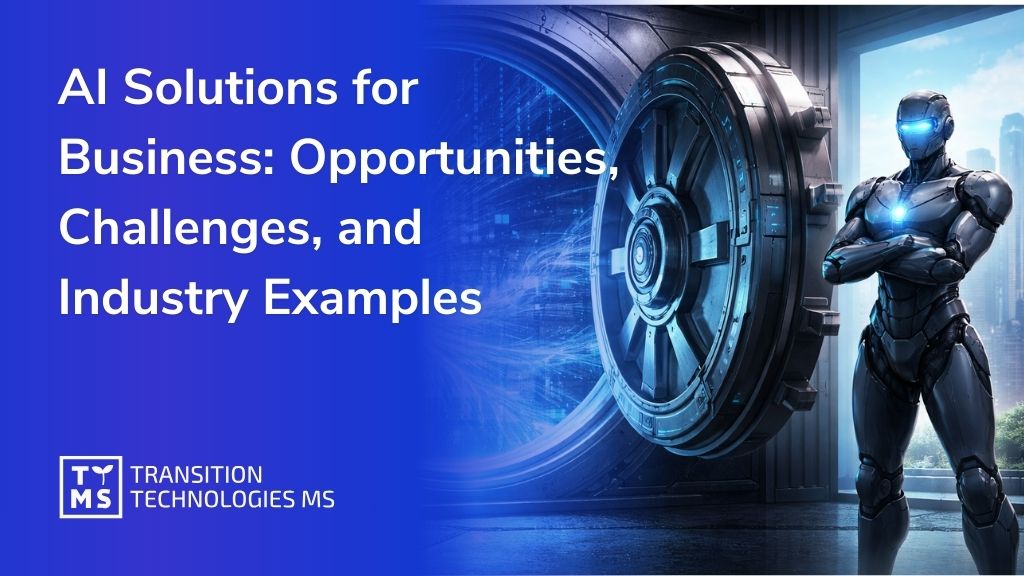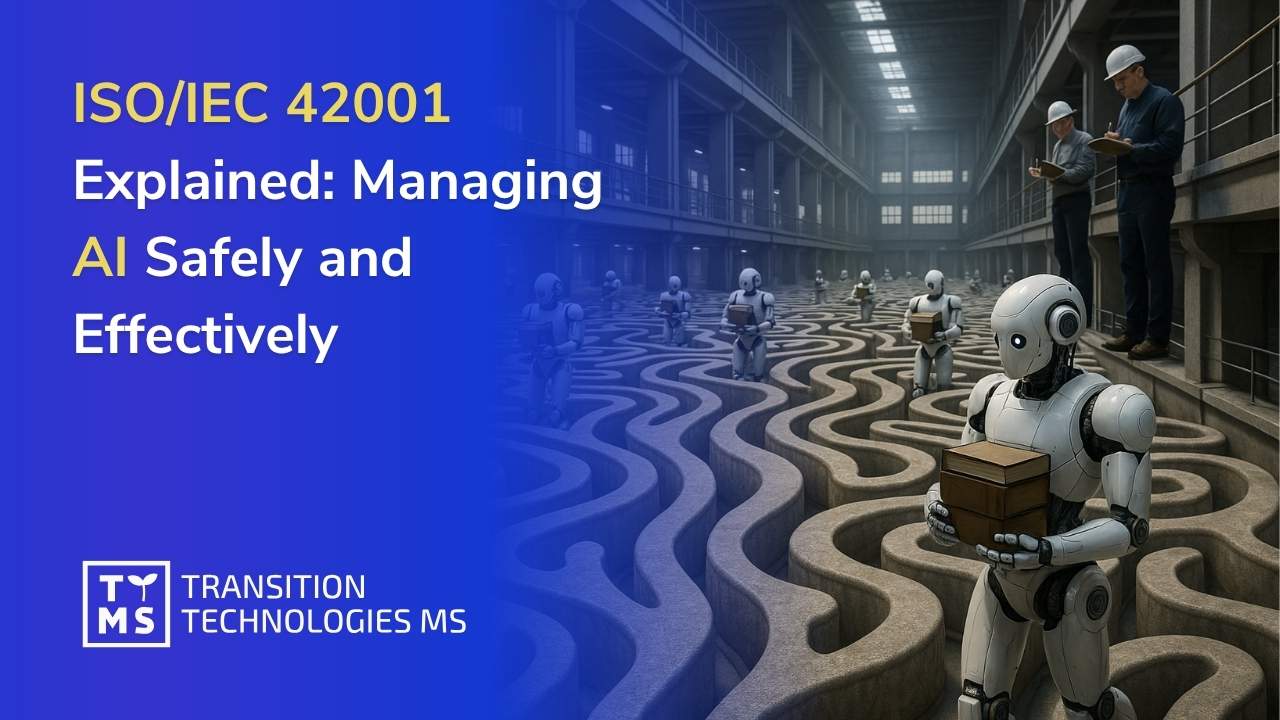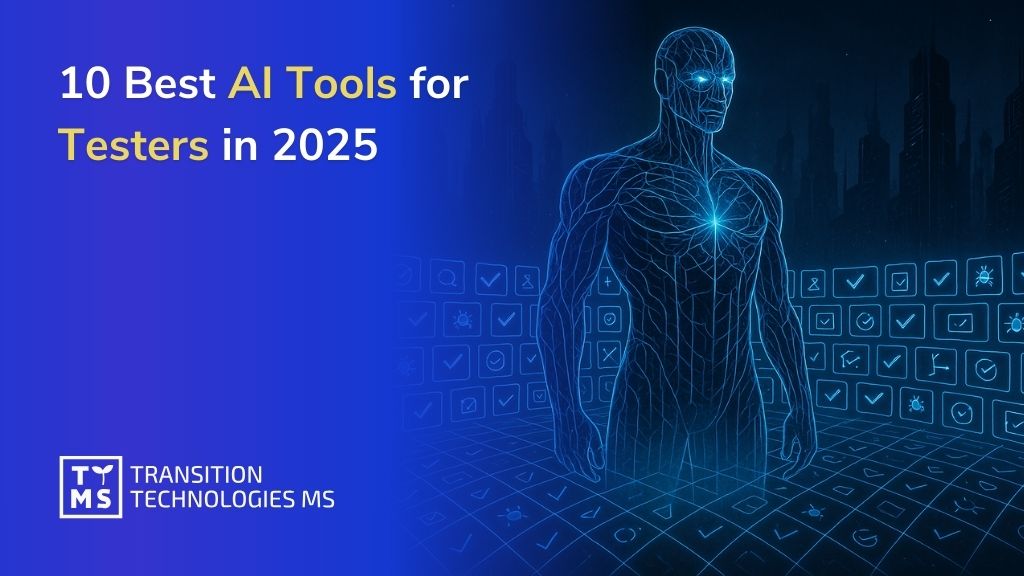The Paris 2024 Olympic Games were exceptional for various reasons. Right from the start, the French—hosting the event after 100 years—surprised the world with an unconventional (and, according to many, controversial) opening ceremony. Subsequently, we were treated to beautiful sporting stories, with the most memorable being the extraordinary world records set by Armand Duplantis and Aleksandra Mirosław.
Records are always being broken, and new (and often surprising) medalists emerge every four years. However, for the first time in full display, the world witnessed:
- breakdancing,
- artificial intelligence (AI) at the Olympics.
While breakdancing—intended to attract younger audiences—may not appear in future Olympics, it is clear that AI is here to stay at major sports events. AI technologies will facilitate life for organizers, viewers, athletes, and coaches. Recognizing this, the International Olympic Committee (IOC) developed the Olympic AI Agenda, outlining strategies to support athletes, streamline the organization of the Games, and promote equality and sustainability within the Olympic movement, while maintaining ethical standards and control over technology.
Let’s explore some of the most interesting examples of how artificial intelligence was utilized during the Paris 2024 Olympics in terms of improving event security, cybersecurity, supporting athletes and referees, and enhancing sports broadcasts.
1. How did AI improve safety at the Olympics?
In 2024, the world faces numerous geopolitical challenges affecting the security of international events. Rising political tensions, terrorism, cyber threats, and organized crime are just a few of the dangers that must be considered when organizing the Olympic Games. How did the French utilize AI in the realm of security?
- VenueTwin System: Developed by OnePlan, the “digital twins” of sports venues allowed the organizing committee to plan the space, scenarios, and all aspects related to the safe conduct of the event.
- Behavior Analysis: AI algorithms analyzed the behavior of individuals within the venues, identifying unusual patterns that could indicate potential threats. They were particularly attuned to gatherings of people in high-risk areas, unattended baggage, and the presence of smoke, fire, or weapons. Notably, before the Games, France passed legislation making it the first EU country to legalize such an extensive AI-assisted surveillance system.
- Facial Recognition: Here’s an interesting point: the Olympic authorities decided against using facial recognition technology. This decision was in response to concerns raised by human rights organizations like Amnesty International, which highlighted the risk of racial discrimination stemming from the analysis of physical traits. Organizers emphasized that their priority was to ensure safety while respecting the rights and freedoms of all participants.
Additionally, modern AI technologies complemented traditional security measures such as police patrols, physical security, and specialized service monitoring. AI was integrated with alarm systems, automatically alerting the relevant authorities to threats, and supported crisis management by providing real-time analysis and recommendations.
2. AI in the Service of Cybersecurity
In the era of digitization and increasing technological significance, cybersecurity played a crucial role in ensuring the safety of the Olympic Games. During Paris 2024, AI was extensively used to monitor computer networks and detect potential threats in real time:
- Threat Detection Systems: AI analyzed network traffic to identify anomalies and potential attacks. Solutions provided by companies such as Darktrace employed advanced machine learning algorithms to continuously monitor all connections and data flows. These systems could detect even the smallest deviations from the norm, such as unusual data transmission volumes, unauthorized logins, or attempts to access restricted network areas. Upon detecting suspicious activity, the systems automatically initiated security measures, such as blocking suspicious IP addresses, restricting access to compromised systems, and notifying IT and security teams. This allowed organizers to swiftly respond to potential threats, minimizing the risk of disruptions and ensuring the continuous operation of digital infrastructure during the Games. AI-based systems also protected athletes by monitoring and safeguarding their privacy.
- Behavioral Analysis: AI tracked network activity and analyzed behaviors in real time for organizers, staff, athletes, coaches, journalists, spectators, and guests. Systems using behavioral modeling techniques created profiles of typical actions for each user. When a user performed actions deviating from the norm, such as logging in from an unusual location, attempting to access resources typically beyond their reach, or executing a large number of operations in a short time, AI flagged these activities as suspicious. In case of detecting unusual activity, systems automatically notified IT and security teams and took preventive measures, such as enforcing password changes, temporarily blocking user accounts, or requiring additional identity verification.
- Data Protection: All data (financial and personal) of participants, spectators, and staff were stored and processed securely. AI systems automatically encrypted data during both transmission and storage, protecting it from unauthorized access. Monitoring access to sensitive information allowed tracking who, when, and for what purpose accessed specific resources. In case of unusual or unauthorized access attempts, systems immediately responded by restricting access and informing the relevant security teams. AI also managed access permissions, automatically assigning appropriate levels of access based on the user’s role and needs, minimizing the risk of accidental disclosure of sensitive information. Through ongoing auditing and reporting, AI systems provided detailed analyses used to assess the effectiveness of security policies and identify potential vulnerabilities.
3. AI for Athletes – Support or Already Doping?
- Biomechanics and AI: Biomechanical analysis systems powered by AI provided detailed parameters regarding athletes’ movement efficiency. The most notable example is Intel’s 3D Athlete Tracking (3DAT) system, which allows for three-dimensional tracking of training sessions and delivers precise data aimed at improving performance. AI analyzed this data in real time, identifying patterns and suggesting modifications to technique that could enhance performance. For example, in sprinting, AI could analyze the angle of a sprinter’s body at the start, stride length, and tempo, proposing optimal changes to increase speed and reduce the risk of injury.
- Motion Capture: Technologies such as Vicon and Hawk-Eye were crucial in tracking athletes’ movements with extraordinary precision. Vicon, equipped with advanced camera systems and sensors, recorded every movement of the athlete, allowing for detailed biomechanical analysis. This enabled coaches to better understand their athletes’ techniques and identify areas needing improvement. Hawk-Eye, known for its precise ball tracking in tennis matches, extended its application to other sports like soccer, cricket, rugby, volleyball, and athletics. This expansion provided precise data on the trajectory and speed of athletes’ movements, which was extremely helpful in analyzing technique and game strategy.
The film above showcases the Vicon system. It analyzes swimmers’ parameters by tracking their movements both underwater and on the surface, helping to optimize swimming techniques.
4. How does AI support judging during the Paris 2024 Olympics?
5. Personalization and Interaction: How AI Enriches the Fan Experience
Intel provided advanced computing and AI technologies, supporting Olympic Broadcasting Services in live broadcasts and data analysis. The 4th generation processors enabled dynamic multimedia content processing, which improved broadcast quality and provided interactive experiences both at the venues and online. Notably, Intel showcased the world’s first 8K OTT (over-the-top) broadcast in Paris. Servers optimized for AI encoded and compressed the 8K video signal produced by Olympic Broadcasting Services (OBS), which was then transmitted to selected broadcasters worldwide. This technology relied on Intel Xeon 5th and 4th generation processors, Intel AI (AMX) accelerators, and Deep Learning Boost technology. By employing advanced h.266/VVC compression technologies, Intel facilitated 8K streaming with minimal latency.
Another form of interactive support came from Alibaba Cloud. The Fans Video Hub allowed fans from around the world to upload their videos, which were then filtered, processed, and displayed at the venues and online, thanks to Alibaba’s global cloud infrastructure.
“Velocius, altius, fortius… accuratius,” or what AI can tell us about an athlete’s performance
At what angle does Anita Włodarczyk throw the hammer? What was the angular velocity of the diver’s rotation? What was the percentage chance of the soccer player scoring from that specific spot in the penalty area? All these data are now available to fans like never before. For example, Omega’s solution, used at the Olympic swimming pool, operates as follows: A series of cameras and sensors track the swimmers’ movements, and AI, combined with previously inputted models, displays detailed parameters such as each swimmer’s speed, their “cadence” (frequency of limb movement), and the current distance from the world record. This level of detail makes watching the events exciting—even for those who are not experts in the sport.
And here’s a personal observation: some sports still lack such solutions. Creating a system for the decathlon, which shows the real-time ranking of athletes during the final event (the 1500m run) based on their potential points, isn’t complicated. It would, however, make watching these highly complex events more thrilling and transparent. Such a system is also missing in the event management itself—decathletes who crossed the finish line were still staring at the scoreboard for two minutes. One might be tempted to suggest Power BI to the organizers…
Markus Rooth (decathlon winner) staring at the telescreen, which will soon show the general classification results.
3D models based on neural networks
6. The One Touchy Topic…
Doping. During the 2024 Paris Olympics, artificial intelligence supported its detection, introducing a new level of sophistication and precision in the fight against unfair practices. AI was used to analyze huge amounts of biological and genetic data in real time, which allowed for faster and more accurate identification of potential violations of anti-doping rules. By using machine learning technology, AI systems could detect subtle patterns that could indicate the use of prohibited substances, something that traditional methods often miss. What’s more, these technologies worked with other tools, such as DNA sequencing and biomarker analysis, which increased the effectiveness and reliability of the tests. Sounds optimistic? It does, but… considering the eternal race between doping manufacturers and the bodies responsible for their detection, we can be sure that this “evil side of the force” has long since harnessed AI for its purposes.
7. The Use of AI at the Next Olympics in Los Angeles 2028
In the future, artificial intelligence (AI) is expected to play an even greater role in the Olympic Games, including the upcoming Games in Los Angeles. Technological advancements will continue to accelerate, and AI will find broader and more advanced applications across various aspects of event organization and broadcasting. For example, AI’s integration with 5G technology will enable live broadcasts in ultra-high definition with no delays and interactive experiences in augmented reality (AR) and virtual reality (VR). Additionally, cloud data analysis will speed up and enhance the delivery of feedback, with solutions like Google Cloud and Microsoft Azure potentially playing a key role in this area. At the Los Angeles Games, we can also expect increased use of AI-powered robots to support event organization, manage logistics, and interact with spectators, performing a range of tasks from delivering refreshments to assisting with navigation and providing information.
Conclusions
Among the 15 technology partners, the majority relied on AI solutions. They were motivated not only by the huge contracts but also by the opportunity to test technologies that are likely to find applications in other areas of life. While this advancement will occur gradually, we can expect “sporting” applications here and now—in training planning, logistics optimization, officiating support, and enhancing fan experiences. Reality will reveal whether artificial intelligence’s role will continue to be merely secondary.
TTMS Begins the Olympiad
We watched and analyzed the Games with fascination—as providers of AI-based solutions in our daily work, this topic is particularly close to us. We now have four years until the next Games, known as the Olympiad (often confused with the sports event itself). During this time, we will enhance the operational efficiency of many companies across various industries—from pharma, through defense, to automotive and finance. Our heptathlon consists of:
- Adobe Experience Manager
- Salesforce
- OpenAI on Azure
- E-Learning
- Microsoft (Power BI, Power Apps, Copilot)
- Snowflake
- Webcon BPS
We invite you to collaborate with us!
What was the role of artificial intelligence during the Paris 2024 Olympic Games?
Artificial intelligence was extensively implemented in various areas of the Paris 2024 Olympic Games to enhance the efficiency and safety of the event. AI supported the organization by monitoring and analyzing security data, optimizing logistics, and facilitating crowd and traffic management. In sports, AI provided advanced performance analytics for athletes, enabling more precise planning of strategies and training. Additionally, the technology enriched fan experiences through personalized broadcasts and interactive content.
What AI technologies were used to monitor security during the Olympics?
Several advanced AI technologies were used to monitor safety. Digital twin systems created virtual models of sports facilities, allowing for simulation and analysis of possible safety scenarios. Behavior analysis algorithms monitored crowds and identified unusual patterns that could indicate potential threats. Additionally, AI was used in video systems for rapid detection and situation assessment, enabling immediate response by law enforcement.
How did AI contribute to enhancing cybersecurity during the Games?
Artificial intelligence played a crucial role in protecting IT systems and personal data during the Games. With advanced data analysis algorithms, AI monitored network traffic and detected anomalies that could suggest attempted breaches or hacking attacks. AI-based systems were also responsible for managing access to sensitive data, ensuring its encryption and security. In the event of detecting potential threats, AI automatically activated defensive mechanisms, significantly enhancing protection against cyberattacks.
What were the benefits of using AI in analyzing sports results?
Artificial intelligence significantly enhanced the analysis of sports results. By utilizing 3D models and motion tracking systems, it was possible to precisely monitor athletes’ techniques and analyze their biomechanics. AI enabled the analysis of vast amounts of data regarding speed, strength, and trajectory, allowing coaches and athletes to identify areas for improvement. These insights were used to optimize training, adjust strategies, and enhance athletes’ performance during competitions.
What innovations in refereeing were introduced thanks to AI at the Games?
AI introduced many innovations in refereeing. Modern image analysis systems based on artificial intelligence assisted referees in accurately assessing athletes’ techniques and scoring. These technologies enabled automatic and precise tracking of movements and evaluation of rule compliance, reducing the risk of human errors and controversies related to referees’ decisions. Additionally, these systems could provide referees with detailed real-time reports, facilitating decision-making during competitions.
How did AI change the way fans watched the Olympics?
AI revolutionized the way fans experienced the Games. AI enabled personalized highlights and coverage of events tailored to individual interests and preferences. Advanced data analytics and broadcast technology enabled fans to enjoy interactive features such as multiple camera angles, detailed statistical analysis, and virtual visualizations. AI also improved broadcast quality through advanced compression and image processing techniques, providing clearer and more immersive images.
What are the challenges of using AI in anti-doping monitoring?
The application of AI in anti-doping monitoring was associated with many challenges. These technologies had to cope with identifying increasingly sophisticated cheating methods and analyzing complex biological data. AI was used to detect subtle changes in biological samples and to predict the possibility of using new doping substances. However, due to the rapidly developing doping techniques, it was necessary to constantly update the algorithms and cooperate with scientists and experts to ensure the effectiveness of monitoring.
What AI technologies have been used in real-time sports performance analysis?
The games used various AI technologies to analyze sports performance in real time. Sensor- and camera-based athlete tracking systems enabled accurate monitoring and analysis of athlete performance. Computer vision technology analyzed images in real time, allowing for rapid processing of speed, trajectory, and technique data. AI-based predictive models predicted results and potential changes in strategy, supporting both athletes and coaches during the competition.
How did AI support athletes in preparing for the Games?
AI has significantly impacted athletes’ preparation for the Games by providing advanced analytical tools. AI algorithms analyzed training data, including technique, performance, and biomechanics, allowing for precise adjustments to training plans and strategies. These technologies also allowed athletes to monitor their progress and adjust plans based on current results. AI allowed athletes to gain insight into areas for improvement and optimize their approach to preparation.
What are the predictions for the future of AI in organizing the Olympic Games?
The role of AI in organizing future Olympic Games is expected to be even more significant. As technology advances, AI will be integrated with new solutions such as 5G, which will enable even faster and more efficient data transmission. Developments in AR and VR technologies will bring new possibilities for virtual experiences for fans. Additionally, AI will increasingly be used to optimize facility management, analyze sports performance and provide better protection against threats. Olympic organizers will continue to strive to use AI in ways that increase the efficiency and safety of the event.






